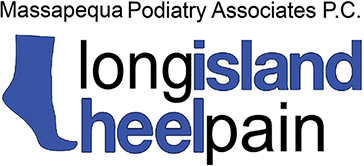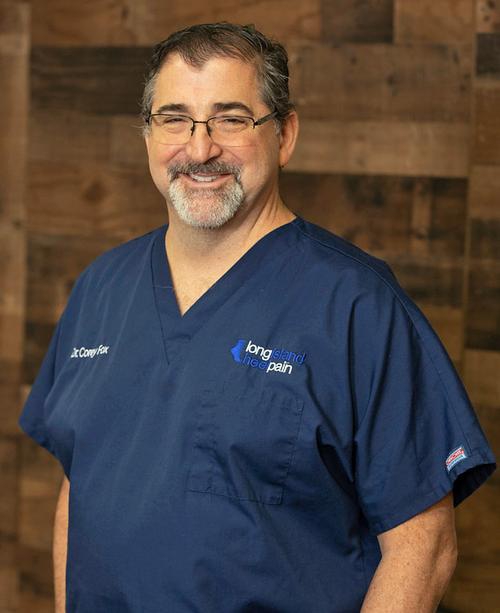There's a chance we'll have some colder days yet this season, but spring is here!
With warmer days in the forecast, you may want to start capitalizing on those outdoor activities you had to shelve for winter. Now, there are certainly dedicated runners in our community—and perhaps you're one of them—who do appropriate footwear, clothing, and gear to brave our coldest months, but there are just more of us who elect to bide the time with other, more indoors-centric activities.
An unfortunate reality is that, as activity levels rise, so do the number of foot and ankle injuries we treat here at Massapequa Podiatry Associates.

The good news, however, is that there are many different treatment options that can be rather beneficial in addressing those injuries. We have a wide variety of tools and techniques to help you overcome foot problem – including conditions responsible for heel pain.
Heel pain is a very common issue for people of all ages and walks of life. In part, this can attributed to the fact there are several different sources of this problem. These include:
-
Achilles tendinitis. In this condition, your Achilles tendon—which is the longest and strongest of all the tendons in your body—becomes inflamed from overuse or overexertion. Whereas this is a very durable tendon, it isn't infallible. Excessive strain can lead to injury. You will recognize a case of Achilles tendinitis if you experience pain in the back of the heel – especially during or immediately following physical activities.
-
Plantar fasciitis. Whereas Achilles tendinitis is an inflamed Achilles, this very common source of heel pain is the result of an inflamed plantar fascia. If you're unfamiliar with this anatomical structure, it's a connective tissue found on the underside of the foot, bridging the rear-foot to the forefoot. This fascia is anchored to the underside of the heel bone. Should you wake up and have severe, stabbing pain in the bottom of the heel with your first steps of the day, you likely have this injury.
-
Sever's disease. The name is a bit misleading, since this isn't technically a disease, but it's just easier to remember than calcaneal apophysis (the medical term). So, what is Sever's? It's the leading cause of heel pain for adolescents. The cause is differences in growth rates between the Achilles tendon and a growth plate it's anchored to in the back of the heel bone. When the growth plate reaches physical maturity before the tendon, it causes tugging on the bone. As with Achilles tendinitis, the pain tends to be stronger during and after activity.
Those are the three most common sources of heel pain, but they aren't the only ones. Others are bursitis, heel spurs, and heel bone fractures (which tend to be quite rare). No matter why your heel hurts, one thing is the same – you should come see us for professional diagnosis and treatment!
Now, it's virtually impossible to completely prevent any injury or medical problem—such as those responsible for heel pain—from happening, but there are measures you can take to lower your risk. Some of the best ways to do so include:
-
Stretch on a daily basis. In only 10-15 minutes, you can effectively stretch out the muscles and connective tissues—each calf muscle, Achilles tendon, and plantar fascia—responsible for the most common sources of heel pain. This is something you can easily do while watching Netflix or as you brush your teeth, but it will make a big difference in your health.
-
Wear proper footwear. It's very difficult to overstate the importance of this - always make sure you're wearing appropriate shoes for any activity you are doing! Beyond being activity-appropriate, your footwear needs to fit properly and be well-constructed. Stick to models that feature robust arch support, solid heel counters, and an acceptable amount of cushioning under the heel.
-
Wear your orthotics (if you have them). Remember, custom orthotics are awesome at treating and preventing medical issues, but—just like with eyeglasses—these medical devices only work if you are actually using them.
-
Ease into new activities. If you have made the smart decision to improve your physical health by starting a new workout program or taking up running, you absolutely must start at low levels of both intensity and duration. You can then gradually ramp them up as you body becomes more accustomed to forces placed on it from the new routine. (Also, consult with your primary care physician and come see us first!)
-
Maintain a healthy bodyweight. There are certainly other reasons to manage your weight, but shedding unwanted pounds takes pressure off your hard-working heels!
-
Don't push yourself too hard. If you're tired, rest. Instead of running five or six days a week, mix it up and run for three days and then cross-train with low-impact activities (swimming, cycling, swimming, walking, yoga etc.) on the other ones.
In the event your preventative efforts are successful—and it's impossible to eliminate all injury risk—come see us for professional care. The good news is that we may be able to treat the problem with conservative care.
Some of the tried-and-true standbys for heel pain treatment include RICE therapy and NSAIDs.
Used in the case of medical treatment, RICE is an acronum standing for rest, ice, compression, and elevation. Rest is necessary to prevent further injury from happening, while at the same time giving the body an opportunity to perform natural healing processes. Ice, compression, and elevation all play roles in pain relief and/or reducing inflammation.
NSAIDs are nonsteroidal anti-inflammatory drugs. These are typically purchased over-the-counter and include various brands of ibuprofen, naproxen sodium, and aspirin. A prescription NSAID we might prescribe is celecoxib – which you may better know by the brand name of Celebrex.

You might need to use a combination of RICE and NSAID treatment to manage your heel pain until you are able to come in for your appointment. Something else you may want to consider during this time is starting a basic stretching program. Since many cases of heel pain are related to tightness in connective tissues, you can benefit from performing various stretches to keep those tissues limber. If you need guidance or specific recommended stretches, contact our office and we’ll be happy to help.
Beyond heel pain treatment options that are more traditional in nature, we are proud to offer several state-of-art methods, such as:
-
Extracorporeal Shockwave Therapy (ESWT) – In this advanced treatment, we capitalize on the energy of powerful acoustic waves, which are directed at the injury site. Once there, the waves stimulate and enhance natural healing processes, along with reducing inflammation and improving blood flow to the area.
-
Platelet Rich Plasma Therapy (PRP) – Originally reserved mostly for high-performance athletes, PRP therapy uses a patient’s own blood to help accelerate healing and recovery in injured soft tissues. Blood is drawn from the patient, then spun in a centrifuge to separate the platelets. A concentration of these platelets in blood plasma is then injected back into the area of the injury. No additional substances are added; only the body’s own tools for recovery are used.
-
Tenex® – Sometimes, our recommendation is this treatment wherein a very thin, needle-like apparatus is used to remove damaged tissue so new, healthy tissue can grow in its place. Since the needle is quite thin, we only need to make a tiny incision at the injury site. Once the needle is properly positioned, we make it vibrate at an ultrasound frequency. As it vibrates at that incredibly fast rate, the needle safely breaks down old tissue – thereby paving the way for new growth.
-
Amniovo® – Amniotic membrane grafts have been used within the medical field for some time now, but this is a new take on the technology. In this case, doctors don’t apply a graft or wrap to the surface. Instead, Amniovo® is an injectable product. It’s derived from discarded placentas—which contain regenerative growth factors—and contributes to faster healing times for soft tissue injuries, like those usually responsible for heel pain. If this sounds dangerous or risky, you can take assurance in the fact it has been carefully studied and approved (as is the case with any advanced technology we use).
Now that you know about heel pain and your treatment options, don’t hesitate to contact our Long Island podiatrist office if you need to schedule an appointment! Either give us a call at (516) 541-9000 or take advantage of our online form and connect with us right now.

